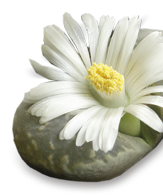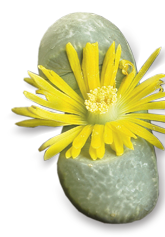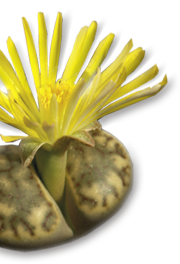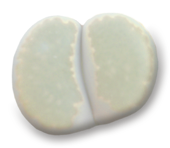


Table of content
From the author
Part I
Characteristics of living stones
What are living stones
Where and in what conditions living stones grow
Place of occurrence
Climate
Soils
How are Mesembryanthemum species (Mesembs, Midday Flowers) built
How mesembs adapted to the harsh living conditions
The specific way of growth
Part II
Principles of growing mesembs
Lithops - the most popular representative of the mesembs family
How to succeed in growing lithops and other mesembs living in the rhythm of the northern hemisphere
The location of collection
Growing on the windowsill
Ensuring optimal temperature
Outdoor growing
Growing in a window „greenhouse box”
Growing of mesembs in a greenhouse
Growing mesembs without covers
Detailed rules for care
Flowerpots
Subsoil
Replanting
Watering
Fertilization
Reproduction of mesembs
Generative reproduction
Preparing a sowing substrate
Sowing containers
Propagator
Method of sowing
Care for seedlings
Vegetative reproduction
How to fight pests and prevent disease
Pest
Diseases of mesembs
Conophytum - a species living in the rhythm of the southern hemisphere
Where and in what conditions Conophyta grow
Climatic conditions
Structure
Care
Reproduction
Calendar of growing for lithops and other mesembs
Part III
Overview of selected genera of mesembs
Genus Aloinopsis
Genus Argyroderma
Genus Dinteranthus
Genus Faucaria
Genus Fenestraria
Genus Gibbaeum
Genus Glottiphyllum
Genus Lapidaria
Genus Pleiospilos
Genus Rhombophyllum
Genus Tanquana
Genus Titanopsis
Cultivars and aberrations among lithops
Instead of an ending. Facts and myths about growing mesembs
Literature




the best books
about succulent plants
in 2018!
